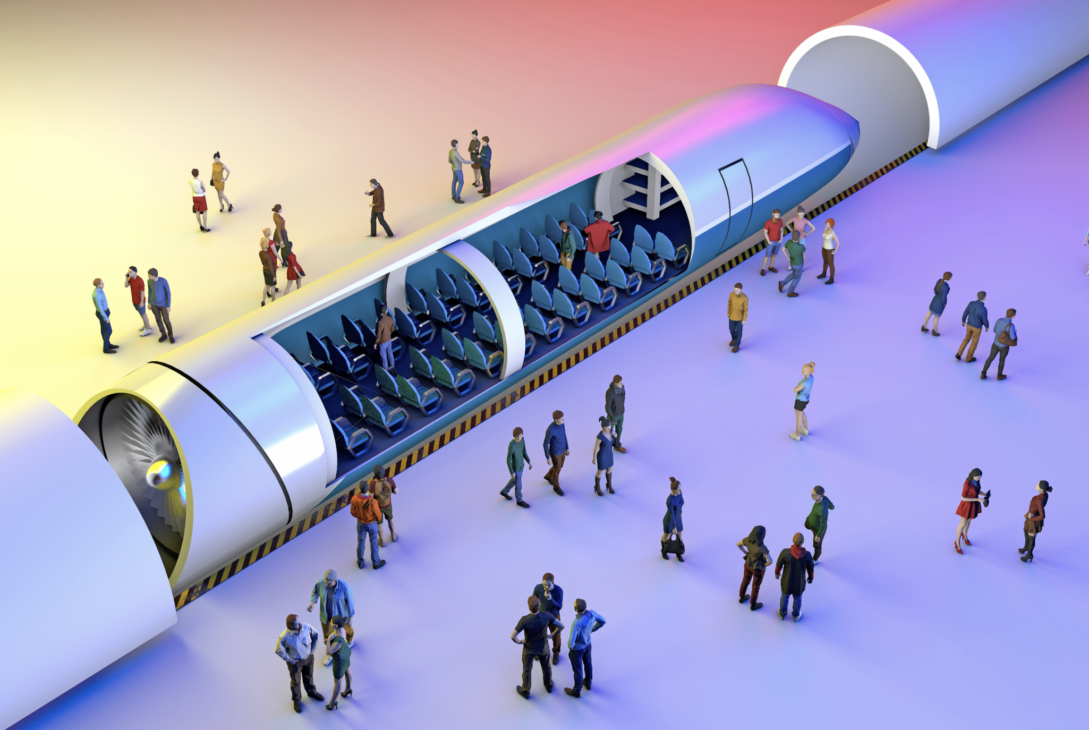In the race of technological advancements, the impending future of transportation is changing at an extraordinary pace. Amongst this transformative landscape, the concept of the Hyperloop, birthed by Elon Musk and his pioneering team at SpaceX, looms as a potential game-changer. As we move into 2023, one might ponder: how does the Hyperloop stack up against our current modes of transport, and what implications might it hold for the future of mobility and the environment?
A Glimpse into the Future: Unpacking the Hyperloop
Imagine sitting in a sleek, modern ‘pod’, propelled at astonishing speeds up to 700 miles per hour through a near-vacuum tube. This scenario encapsulates the essence of the Hyperloop, an innovative concept for passenger and freight transportation. Its mission? To cut travel time on long-distance journeys to a fraction, offering an unprecedented blend of speed and efficiency.
Hyperloop Versus Current Modes of Transport
When compared to our existing transportation systems, the Hyperloop presents a quantum leap forward in several key areas.
Speed: Traditional modes of transport such as cars, trains, and planes are limited by factors such as traffic congestion, air turbulence, and friction. The Hyperloop, operating in near-vacuum conditions and using magnetic levitation technology, is designed to reach speeds of up to 700 miles per hour, making it far faster than existing methods of transportation.
Efficiency: While cars and planes are highly dependent on fossil fuels, the Hyperloop is projected to be powered primarily by renewable energy, including solar power. This could significantly reduce the environmental impact of long-distance transportation, contributing to efforts to combat climate change.
Connectivity: The Hyperloop could make it possible to live in one city and work in another hundreds of miles away, fundamentally changing our perception of geographical distance. In contrast, current transportation systems, with their slower speeds and less efficient operation, often make such living arrangements impractical.
Safety: Current transportation systems are subject to a wide range of potential safety hazards, from traffic accidents to weather-related aviation incidents. While the Hyperloop would undoubtedly present its own unique set of safety challenges, its enclosed, controlled environment might mitigate some of the variables that can lead to accidents in other modes of transportation.
Hyperloop in the Context of the Future
If the Hyperloop were to become a reality, it could revolutionize transportation as we know it. Long-distance travel could become a quick, routine part of daily life. Commuting patterns would drastically change, with implications for everything from urban planning to international commerce.
Moreover, in an era when sustainability is a global imperative, the Hyperloop’s potential for high-speed, low-carbon transportation could be a significant step towards reducing our collective carbon footprint.
Navigating the Path to Tomorrow
While the Hyperloop presents an exciting vision of the future, it’s essential to remember that it still faces considerable challenges. These include the technical hurdles of building the infrastructure, ensuring passenger safety at high speeds, and securing the necessary regulatory approvals.
However, if these challenges can be overcome, the Hyperloop could represent a ground-breaking advancement in transportation. It offers a vision of a future where distance and time are no longer significant barriers to human interaction and economic activity. As we move forward into 2023 and beyond, the potential of the Hyperloop serves as a testament to human ingenuity and our capacity for transformative innovation.
Towards a Greener Future
In the face of the urgent climate crisis, our world needs sustainable solutions. Transportation, as a major contributor to global carbon emissions, is one sector where there is substantial room for improvement. The Hyperloop, with its promise of high-speed, low-carbon travel, could play a pivotal role in the transition towards a greener future.
In fact, the very concept of the Hyperloop is grounded in sustainability. Its dependence on renewable energy sources and minimal environmental footprint, as compared to the traditional means of transportation, places it firmly on the frontline of eco-friendly technology. By reducing our reliance on fossil fuels, the Hyperloop could significantly lower greenhouse gas emissions, aiding global efforts to halt climate change.
A Vision of Tomorrow
The Hyperloop encapsulates the ethos of the future – it is ambitious, forward-thinking, and embraces the call to sustainability. While it is still in the developmental stages and the timeline to realization is uncertain, the potential benefits it brings to the table – from transforming long-distance travel to supporting a sustainable future – make it a compelling solution.
As we forge ahead into 2023 and beyond, we must continue to challenge the norm, rethink possibilities, and strive to advance beyond our limitations. The Hyperloop is not just a mode of transportation, but a symbol of what we can achieve when we dare to dream and innovate.
It is important, as we proceed, to remember that each innovative leap comes with its unique set of challenges. Safety and feasibility trials, securing the necessary permissions and certifications, and ensuring public acceptance are all parts of the path ahead. We must tackle these with a clear-eyed understanding of their implications.
In the grand scheme of things, the Hyperloop represents a beacon of hope and a testament to human ingenuity. It serves as an inspiration for the numerous possibilities we can explore to build a more connected, sustainable world. So, as we continue to navigate the uncharted waters of technological innovation, let us look to the horizon with anticipation and resilience, knowing well that the journey to progress might be arduous, but the destination will certainly be worth it.




